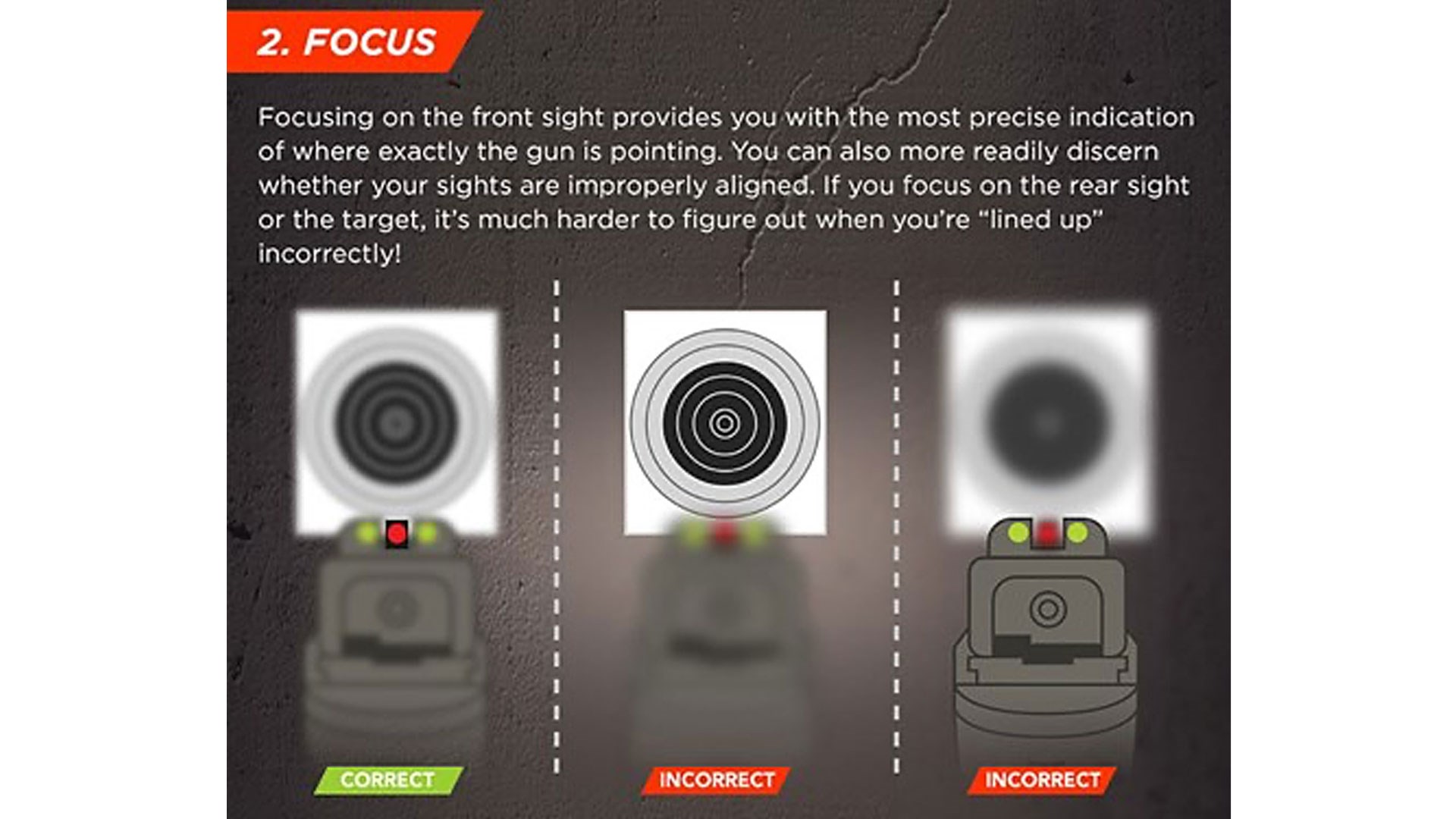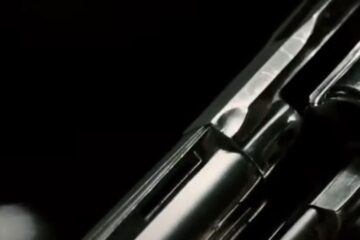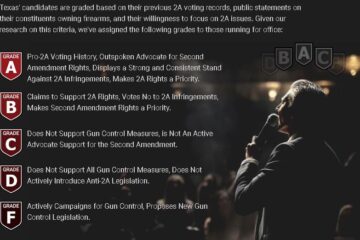Aiming – Sight Alignment, Sight Picture and Focus
Aiming is a fundamental marksmanship skill that is essential to consistently shoot accurately with a firearm. Properly aiming a rifle or a pistol with iron sights consists of two distinct steps or processes. The first step is creating proper sight alignment. The second is obtaining a correct sight picture. Most pistols are outfitted with Patridge-style sights, which have a thick front blade for the front sight and a square notched rear sight. For the purpose of this article I will be referencing Patridge Sights.
First Up: Sight Alignment
The first step, sight alignment, is achieved when the front sight of the firearm is centered in the square notch of its rear sight. Depending on the type of firearm that is being used, the front and rear sights may be shaped a bit differently, but the purpose of the sights will remain the same.
- Activate Your Own Stem Cells & Reverse The Aging Process - Choose "Select & Save" OR Join, Brand Partner & Select Silver To Get Wholesale Prices
- Get your Vitamin B17 & Get 10% Off With Promo Code TIM
- How To Protect Yourself From 5G, EMF & RF Radiation
- Protect Your Income & Retirement Assets With Gold & Silver
- Grab This Bucket Of Heirloom Seeds & Get Free Shipping With Promo Code TIM
- Here’s A Way You Can Stockpile Food For The Future
- Stockpile Your Ammo & Save $15 On Your First Order
- Preparing Also Means Detoxifying – Here’s One Simple Way To Detoxify
Once proper sight alignment is achieved, the second step in the aiming process is acquiring a proper sight picture. A proper sight picture is when the front and rear sight of the firearm are properly aligned and oriented onto the target correctly to produce an accurate hit. In essence, it is sight alignment, with the target added into the equation. It is what a picture will look like if taken from the shooters eyes just before and during the firing process.
It is important to note that the perfect sight picture for your Glock G17 could be different for your 1911 if each firearm is not outfitted with adjustable sights. There are many different reasons for this, but one common reason is the front and rear sights from varying manufacturers differ in sight height in relation to the bore of the firearm. The solution to this problem is using what is called a hold.
Get A Good Sight Picture
To determine the correct hold for your firearm you should fire a series of shot groups at a target from varying distances. For example, when I acquire a new handgun that I am unfamiliar with, I will set up a blank paper target at 10 yards with a 1 inch square pasty affixed to the center. I will then fire a grouping of 5 rounds using a bench rest position. The use of a bench rest allows the shooter to maximize bone support and allow muscle relaxation which minimizes unwanted movement and in turn creates a stable shooting position that will allow for consistent accurate shots. Once I have studied the shot groups I can quickly identify the proper hold I should be using to hit my intended target. I will start extending the range of my target out to 25 and then 50 yards. There will be no need for a 1-inch pasty at these extended distances. I will use a pie plate circle target at 25 yards and an IPSC body target at 50 yards.
When I use a rifle I will do the same process but shoot at extended distances. As I extend my range, my holds will change and be elevated on my target. Extending the range of the target allows me to fine tune my holds and begin to create an accurate mental chart for where my rounds will impact the target. I would suggest that the shooter also keep a data book for their firearm and make notes that include a drop chart and the correct holds to be used so that the shooter can reference it at a later date. This is very important data to know and understand because we as shooters are responsible for every bullet we fire down range. The only way we can truthfully ensure accurate shot placement is to intimately understand the aiming process of our firearms.

Lastly, it’s important to understand that focus is vitally important to the fundamentals of aiming. When it comes to our eyes focusing on an object, they are limited to only being able to focus on one object at a time. Because of this limitation, it is impossible for our eyes to focus on the entire sight picture. The good news is we do not need to focus on the entire sight picture. As shooters, we need to be concerned with putting all of our focus on the front sight at the time of the shot. Our peripheral vision will aid us in sight alignment and where we place our front sight in relation to the target. One of the biggest mistakes a beginner shooter will make is focusing on the target and not on the front sight when they engage a target. If a shooter is focused on the target and not the front sight they will have a tendency to shoot around the target. A lot of time I find myself bouncing my focus from the front sight to the target and then back to the front sight. This is acceptable to do, however, it is critical that when we take up the last bit of slack in the trigger, we need to have all of our focus on the front sight when the trigger breaks and the firing pin strikes the primer.
Start It All Over With The Next Shot
After the shot breaks the shooter should make a mental snapshot of the sight picture and where their front sight was in relation to the target when the firearm was fired. This can be done with meaningful practice and become second nature after a short bit of time. This is a critical habit to get into and one that competent shooters will master. Calling your shot each and every time will help you focus on the front sight and help you build correct training habits. It will also aid the shooter in self diagnosing marksmanship errors. For example, if a shooter is anticipating his or her shots, the front sight will dip down just before the firearm is fired. If a right handed shooter is jerking the trigger, the front sight will be pulled to the right just before the firearm is fired. A left-handed shooter will pull the front sight to the left. If the shooter is properly focusing on the front sight and calling their shots they will see the front sight moving out of alignment and be able to self diagnose their marksmanship error and in turn, correct it.
Maintaining sight alignment and sight picture for multiple shots is only done by applying all of the fundamentals of marksmanship. The shooter needs to have a proper stance to control recoil and orient the firearm to create natural point of aim. There are no shortcuts to becoming an accurate shooter. One must practice regularly and correctly to build solid fundamentals.
Article by DENNIS DECHANT














